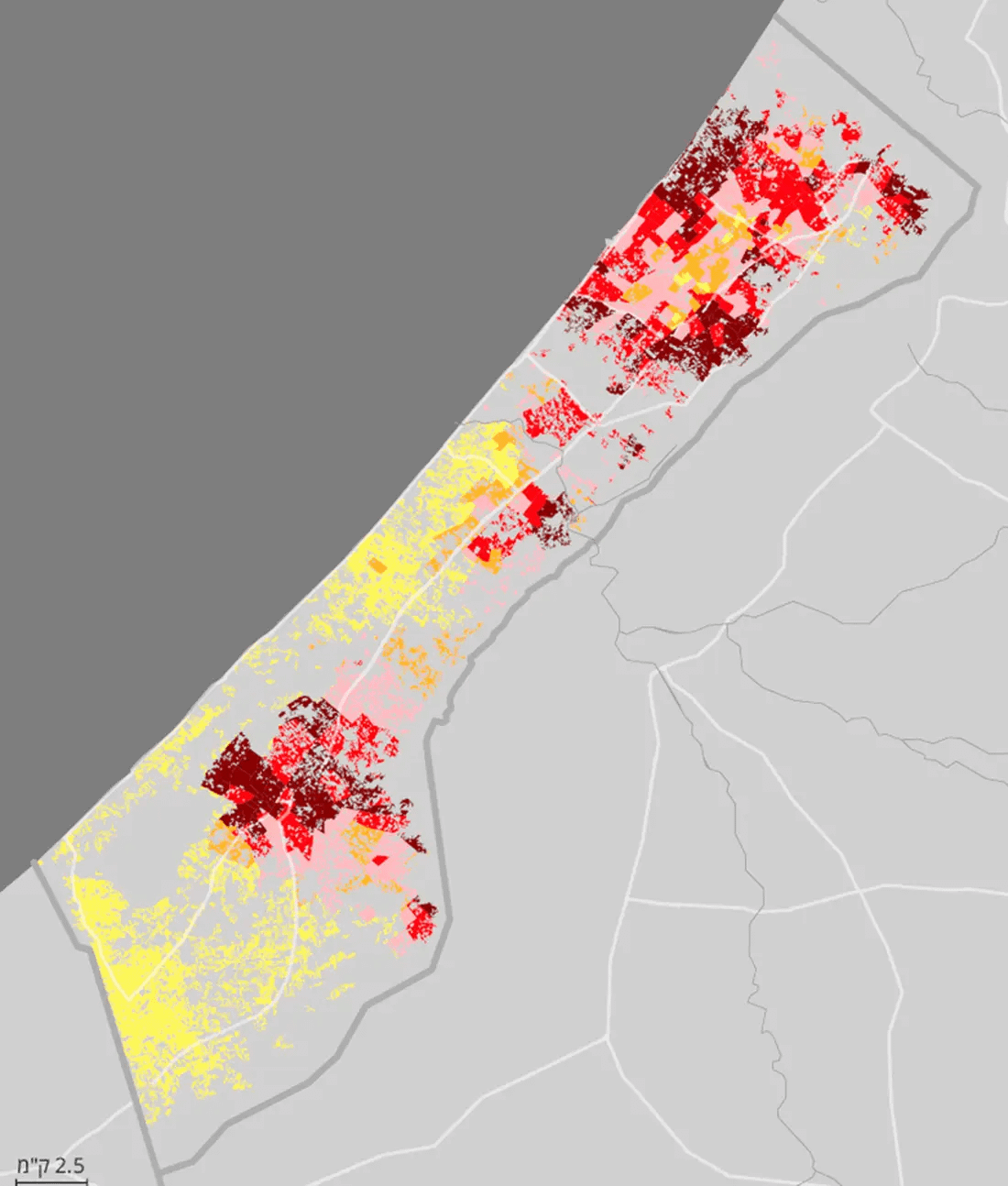'We will cause great destruction there': the Dahiya Doctrine
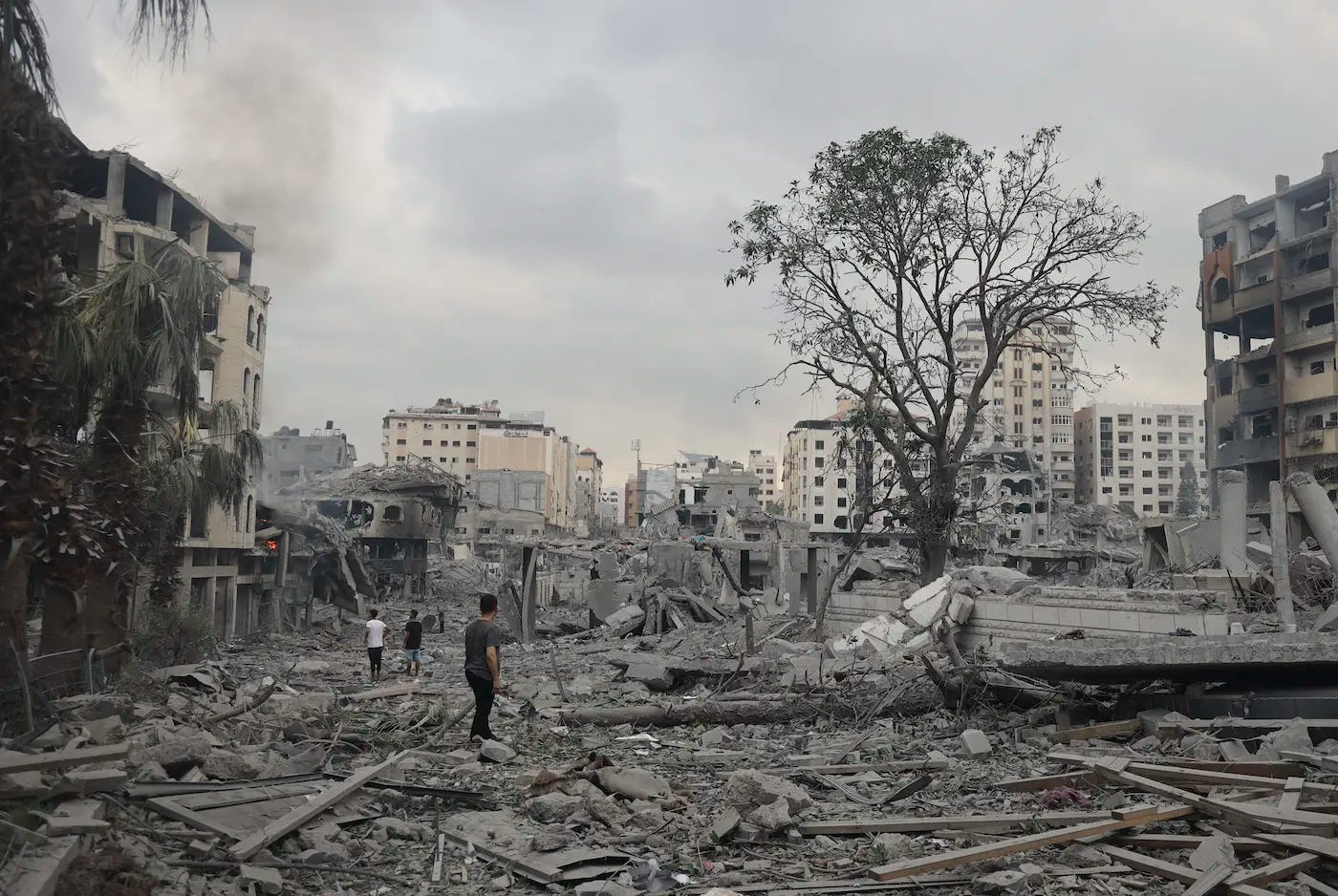
Where Gaza City’s Tal al-Hawa district once stood, now only rubble remains. Apartment buildings with balconies where children played, shops where families bought bread, schools where students learned, now piles of debris towering over abandoned vehicles. Concrete dust hangs in the air like fog.
Seventy percent of Gaza’s homes, hospitals, schools, mosques, and universities have been damaged or destroyed in two years of bombardment. Entire towns, like Umm al-Nasser and Al-Mughraqa, have been erased, every single building flattened, their 16,500 former residents displaced. At least 84 percent of health facilities lie in ruins. The education system has collapsed, with all 625,000 students out of school, 56 facilities destroyed, and 219 more damaged. More than 61 million tons of debris, the equivalent of 25 Eiffel Towers, must be cleared before reconstruction can even begin.

This is not the chaos of war. This is the Dahiya Doctrine: a deliberate Israeli military strategy of systematic destruction that treats entire civilian populations and their infrastructure as legitimate military targets. Named after the Beirut suburb Israel reduced to rubble in 2006, killing over 1,000 Lebanese and displacing 900,000 more, the doctrine has shaped Israeli military operations for nearly two decades. Its current implementation in Gaza represents the strategy’s most catastrophic application yet, with 67,075 Palestinians killed and 169,430 injured, meaning more than 10 percent of Gaza’s population is now dead or wounded.
Born in Beirut’s Ashes
The Dahiya Doctrine takes its name from the Dahiya neighborhood in southern Beirut, a Hezbollah stronghold that Israeli forces decimated during the 2006 Lebanon War. Over 34 days, Israeli aircraft and artillery reduced the densely populated suburb to rubble, killing more than 1,000 people, approximately one-third of them children, and displacing 900,000 Lebanese civilians.
The strategy was not an accident of war, but a deliberate military doctrine formulated by then-Major General Gadi Eisenkot, who commanded Israel’s Northern Front during the Lebanon campaign. In a now-infamous October 2008 interview with Yedioth Ahronoth, Eisenkot made the following statement:
“What happened in the Dahiya quarter of Beirut in 2006 will happen in every village from which Israel is fired on… We will apply disproportionate force on it and cause great damage and destruction there. From our standpoint, these are not civilian villages, they are military bases… This is not a recommendation. This is a plan. And it has been approved.”
This represented a fundamental departure from international humanitarian law. By explicitly rejecting the distinction between civilian and military targets, the doctrine treats entire populations as legitimate objects of attack. Former UN Special Rapporteur Richard Falk has called this “an avowal of a doctrine of violence that needs to be called by its proper name: state terrorism”.
The Doctrine’s Architecture
Colonel Gabi Siboni, a reserve officer and fellow architect of the doctrine, outlined its strategic logic in a 2008 paper for Tel Aviv University’s Institute for National Security Studies. The goal, Siboni wrote, is to target “economic interests and the centers of civilian power that support the organization,” inflicting damage so severe that it “demand[s] long and expensive reconstruction processes”.
The doctrine’s main goal is to make the civilian population suffer so intensely that they pressure their leaders, whether Hamas in Gaza or Hezbollah in Lebanon, to cease resistance. This isn’t a baseless claim. Major General Giora Eiland, an advisor to Defense Minister Yoav Gallant, explicitly stated attacks will be deterred by harming “the civilian population to such an extent that it will bring pressure to bear on the enemy combatants”.
Implementation
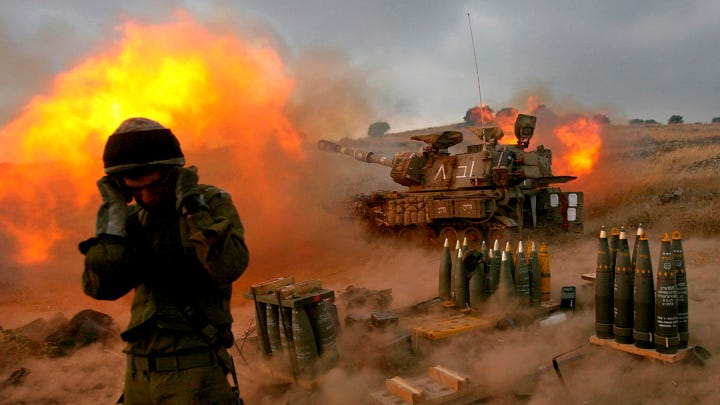
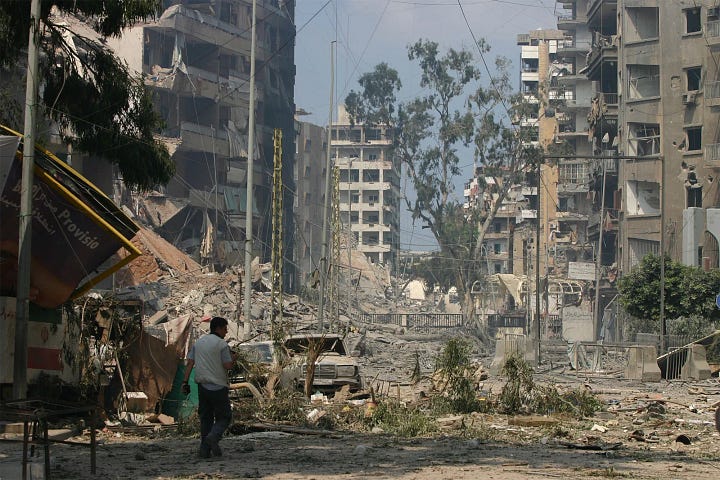
The 2006 Lebanon War served as proof of concept, but the Dahiya Doctrine found its most consistent application in Gaza, where Israel has conducted repeated military operations against the densely populated Palestinian enclave.
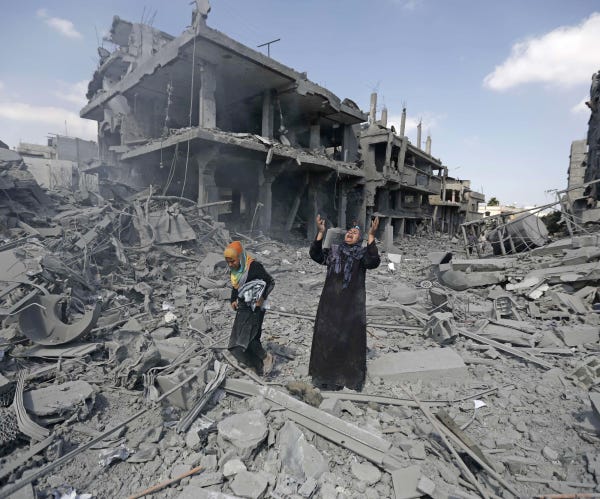
Operation Cast Lead (2008-2009) marked the doctrine’s first full-scale deployment in Gaza. Over 22 days, Israeli forces killed between 1,385 and 1,419 Palestinians, including at least 308 children. The operation destroyed 3,540 housing units completely and severely damaged 2,870 more, leaving over 20,000 people homeless.
The UN Fact-Finding Mission led by Justice Richard Goldstone concluded that the operation was “a deliberately disproportionate attack designed to punish, humiliate and terrorize a civilian population”. The mission found that Israeli tactics were “consistent with previous practices, most recently during the Lebanon war in 2006,” and involved “the application of disproportionate force and the causing of great damage and destruction to civilian property and infrastructure, and suffering to civilian populations”.
Amnesty International’s investigation reached similar conclusions, finding that Israeli forces “repeatedly breached the laws of war” through “direct attacks on civilians and civilian buildings”. Shortly after the operation, Israeli Prime Minister Ehud Olmert told his cabinet that “the government’s position was from the outset that if there is shooting at the residents of the south, there will be a harsh Israeli response [against Gaza] that will be disproportionate,” a rare public acknowledgment of the doctrine in action.
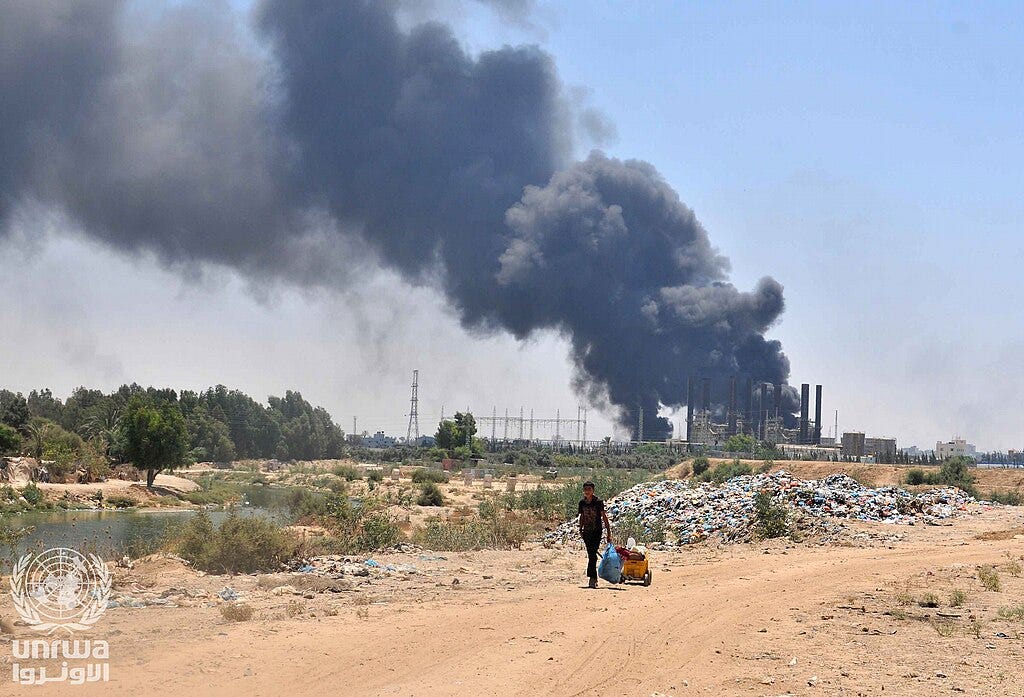
Operation Protective Edge (2014) killed between 2,125 and 2,310 Gazans, with the UN estimating that 65 percent were civilians over the 50-day conflict. The operation destroyed more than 7,000 homes completely and damaged an additional 89,000, with rebuilding costs estimated at $4-6 billion over 20 years. Israeli forces targeted Gaza’s only power plant, creating severe shortages of clean water and electricity, with raw sewage flowing through the streets.
October 7th
The Hamas attack on October 7, 2023, which killed approximately 1,139 Israelis and took 251 hostages, triggered what multiple analysts describe as the Dahiya Doctrine’s most devastating implementation to date.
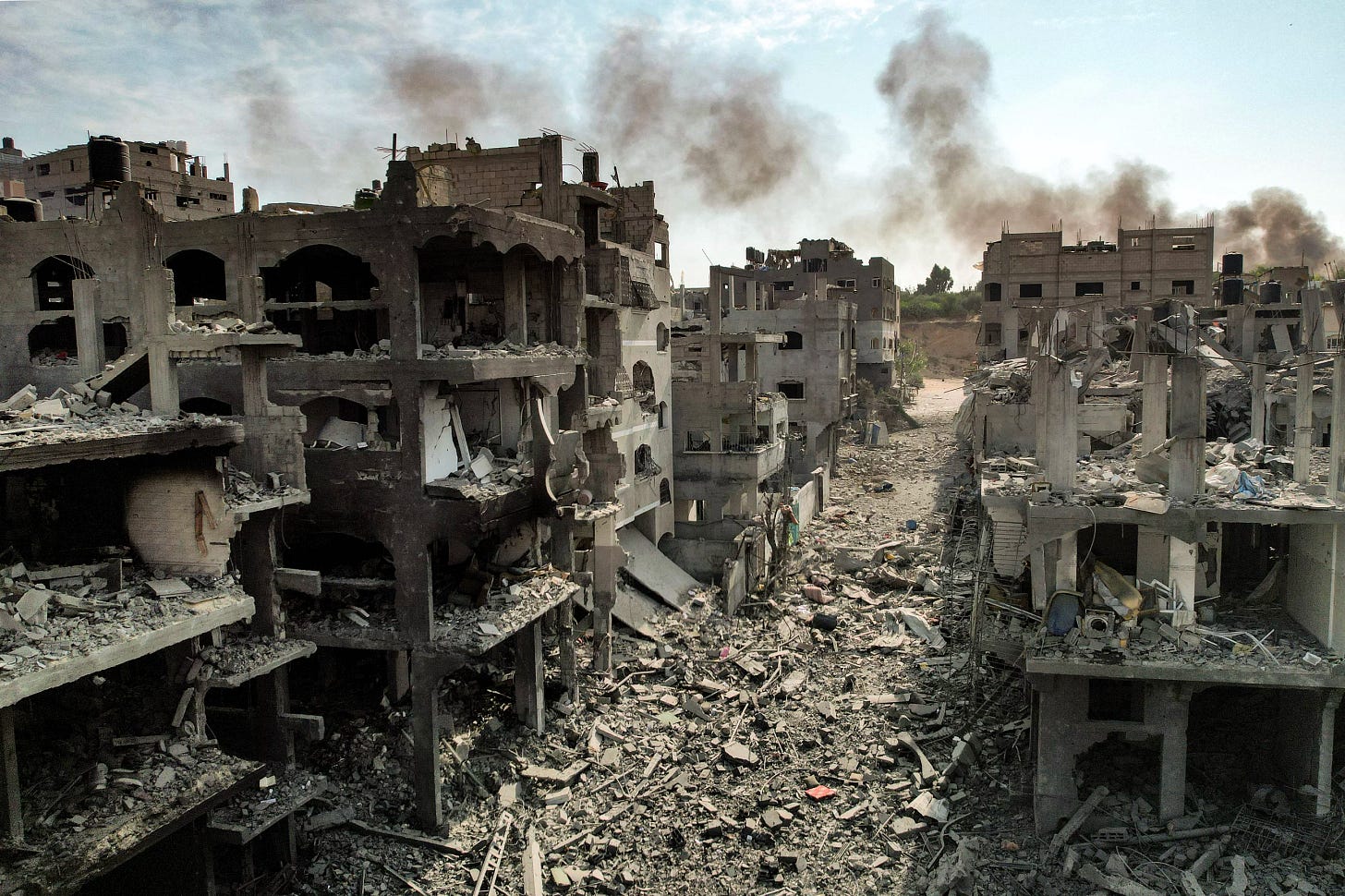
Within hours of the attack, Israeli Defense Minister Yoav Gallant announced a “complete siege” of Gaza, declaring: “I have ordered a complete siege on the Gaza Strip. There will be no electricity, no food, no fuel, everything is closed. We are fighting human animals and we are acting accordingly”.
Colonel Yogev Bar-Sheshet, deputy head of the Civil Administration for the Palestinian territories, stated on Israeli television on November 4, 2023: “Whoever returns here, if they return here after, will find scorched earth. No houses, no agriculture, no nothing. They have no future”.
The scale of destruction has been unprecedented. As of October 3, 2025, the Gaza Ministry of Health reported 67,075 Palestinians killed and 169,430 injured, making up more than 10 percent of Gaza’s population. An independent study by the London School of Hygiene & Tropical Medicine estimated that by June 2024, actual traumatic injury deaths reached 64,260 (41 percent higher than official counts), with 59 percent of victims being women, children, and the elderly.
Satellite imagery analysis shows that approximately 70 percent of Gaza’s structures have been either completely destroyed or severely damaged. Human Rights Watch accused Israel of committing acts of genocide by systematically targeting water and sanitation infrastructure. At least 15 children died of hypothermia during the winter due to Israel’s destruction of housing and power facilities.
The AI Assassination Factory
One of the most alarming developments in the current Gaza war is the use of artificial intelligence to automate and accelerate target selection, a technological evolution of the Dahiya Doctrine’s core principles.
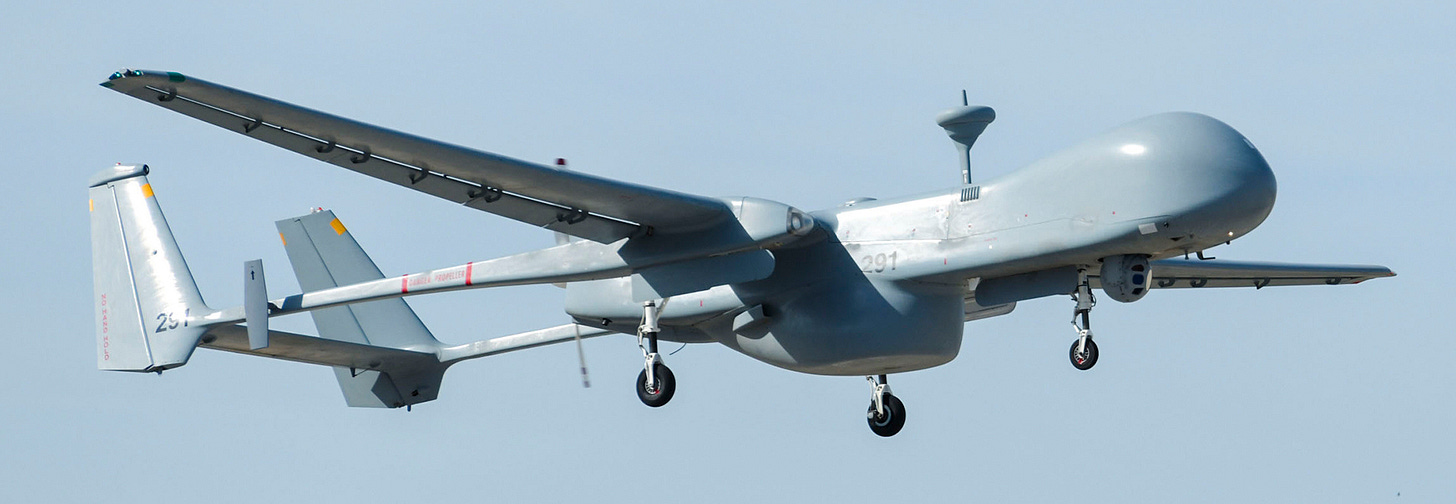
Israeli +972 Magazine and Local Call reported that the IDF uses an AI system called “Habsora” (Hebrew for “The Gospel”) to generate hundreds of bombing targets daily. According to former Israeli intelligence officers interviewed by the publications, the system operates as a “mass assassination factory,” prioritizing quantity over accuracy.
The AI system enables strikes on residential homes where even junior Hamas operatives live, knowingly killing entire families in the process. As IDF Spokesperson Daniel Hagari stated at the start of the operation: “The emphasis is on damage and not on accuracy”.
Internal sources told +972 that Israel authorized killing up to 15-20 civilians per low-ranking militant, while for senior militants, killing more than 100 civilians was considered acceptable. One intelligence officer explained the calculus: “It’s much easier to bomb a family’s home,” where targets are easier to find than in military contexts.
The system allegedly uses machine learning to identify patterns in surveillance data, generating targeting recommendations based on statistical probability rather than factual evidence or reasoning, a method that AI experts warn produces high error rates in applications requiring precision and safety.
Legal and Moral Reckoning
The Dahiya Doctrine violates two cardinal principles of international humanitarian law: the Principle of Distinction and the Principle of Proportionality.
The Principle of Distinction, codified in the four Geneva Conventions of 1949 and their Additional Protocols of 1977, mandates that armies cannot target civilians and must protect them from violence. The Principle of Proportionality, also embodied in the 1977 Protocols, considers it a war crime to intentionally attack a military objective knowing that incidental civilian injuries would be clearly excessive in relation to anticipated military advantage.
By explicitly declaring that “these are not civilian villages, they are military bases,” Eisenkot’s formulation of the Dahiya Doctrine directly contradicts these fundamental legal protections. As former UN Special Rapporteur Richard Falk wrote, the doctrine treats “the civilian infrastructure of adversaries such as Hamas or Hezbollah as permissible military targets, which is not only an overt violation of the most elementary norms of the law of war and of universal morality, but an avowal of a doctrine of violence that needs to be called by its proper name: state terrorism”.
The 2009 Goldstone Report concluded that the tactics used in Operation Cast Lead were consistent with the Dahiya Doctrine and involved “the application of disproportionate force” in violation of international law. While report author Richard Goldstone later partially walked back some conclusions, a reversal his three co-authors strongly rejected, the factual findings about systematic destruction of civilian infrastructure and population have been corroborated by multiple independent investigations.
Why the Doctrine Remains “Secret”
The Dahiya Doctrine has never been officially codified in Israeli military manuals or formally announced as state policy, yet it has operated as the de facto strategic framework for Israeli military operations for nearly two decades. This paradox serves important strategic and legal functions.
Military censorship in Israel initially prohibited discussion of the doctrine until 2003. Even after Eisenkot’s 2008 public articulation, Israeli officials have consistently avoided using the term “Dahiya Doctrine” in formal contexts, instead employing euphemisms about “restoring deterrence” or “defending against terrorism”.
This strategic ambiguity allows Israel to maintain plausible deniability while implementing the doctrine’s core principles. Israeli officials can claim they are simply defending against terrorist threats while avoiding explicit acknowledgment of a strategy that international legal experts universally recognize as violating the laws of war.
The doctrine’s semi-covert status also complicates efforts at accountability. Without formal policy documents, prosecuting war crimes becomes more difficult, as intent must be inferred from patterns of behavior and scattered statements rather than official directives.
Impact on Palestinians
For Palestinians in Gaza, the Dahiya Doctrine has transformed their territory into what UN officials and humanitarian organizations describe as the world’s largest open-air prison, subjected to repeated episodes of systematic destruction.

The human cost defies comprehension. Across multiple operations since 2008, Israeli forces have killed thousands of Palestinian civilians, destroyed tens of thousands of homes, and systematically dismantled Gaza’s civilian infrastructure. Entire families have been erased from the civil registry—1,410 as of November 2024.
The psychological trauma extends across generations. Children in Gaza have experienced multiple wars, living under blockade and siege with limited access to food, water, electricity, and medical care. The UN Relief and Works Agency estimates that approximately 70 percent of Gaza’s population consists of refugees from the 1948 Nakba and their descendants—people already living with generational trauma who now face systematic destruction of their communities.
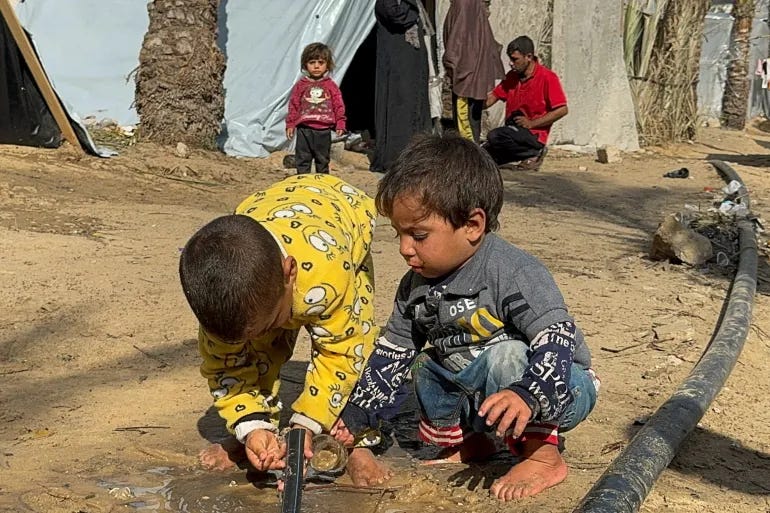
The economic devastation is equally severe. Each military operation destroys critical water treatment plants, power facilities, hospitals, schools, and agricultural lands, setting back development by decades and creating cycles of poverty and dependence.
Human rights organizations have documented how the siege and repeated attacks create a “deliberate humanitarian crisis,” in the words of Israeli analyst Nadav Weiman of Breaking the Silence. The blockade, combined with periodic military operations, has reduced Gaza to a state of permanent crisis, with the majority of the population dependent on humanitarian aid for survival.
Impact on Israeli Society
While the physical devastation falls overwhelmingly on Palestinians, the Dahiya Doctrine has also exacted a toll on Israeli society. Prominent Israeli commentators have warned about the moral corrosion that comes from normalizing the mass killing of civilians. Gideon Levy, a columnist for Haaretz, lamented that “the moral voice of restraint has been abandoned… Everything is permissible” against Palestinians. Amira Haas, daughter of Holocaust survivors, expressed relief that her parents did not live to see how Israeli leaders justify military actions with what she called a “language laundromat” that seeks to redefine Israel’s moral compass.
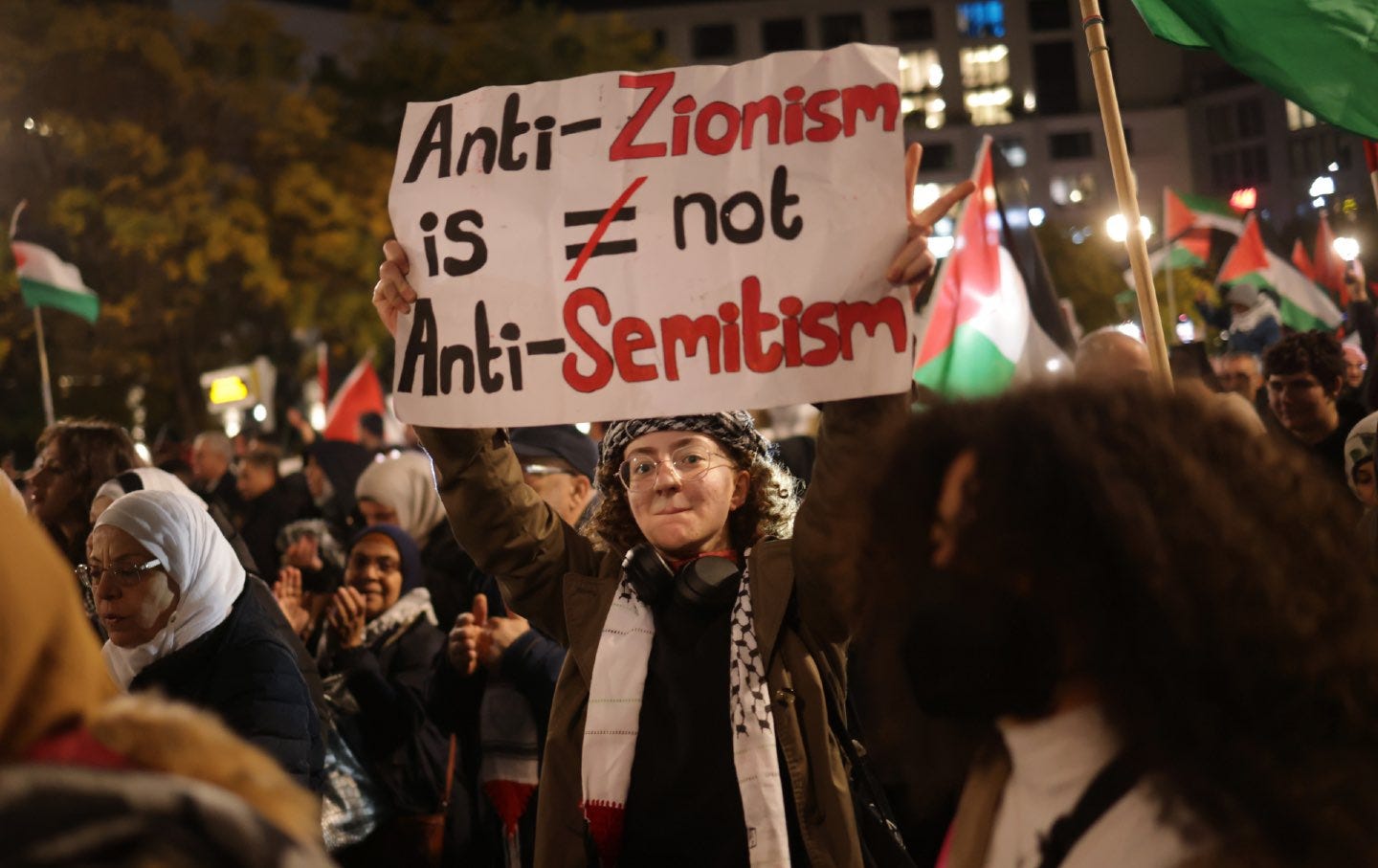
Oxford professor Avi Shlaim, a historian and former proud Zionist, publicly labeled Israel a “rogue” and “gangster” state, driven by actions that are “completely unscrupulous”. Professor Neve Gordon of Ben Gurion University compared Israel’s actions in Gaza to “raising animals for slaughter on a farm”.
The normalization of extreme violence has political currency in Israel. Benny Gantz, who served as defense minister and is positioned as a centrist alternative to Benjamin Netanyahu, boasted during his 2012 campaign that under his command, Gaza was “sent back to the Stone Age”. Such rhetoric demonstrates how the Dahiya Doctrine has become not just military policy but political orthodoxy across the Israeli spectrum.
The impact on Israeli soldiers who implement these policies remains underexamined. In the United States, high rates of violent crime among combat veterans reflect how participation in warfare erodes moral frameworks. In Israel, where nearly all able-bodied citizens serve in the military, the psychological effects of participating in operations that systematically target civilian populations potentially affect entire generations.
The Doctrine’s Strategic Failure
Despite its devastating implementation, the Dahiya Doctrine has failed to achieve its stated strategic objective: deterring attacks on Israel and destroying hostile armed groups.
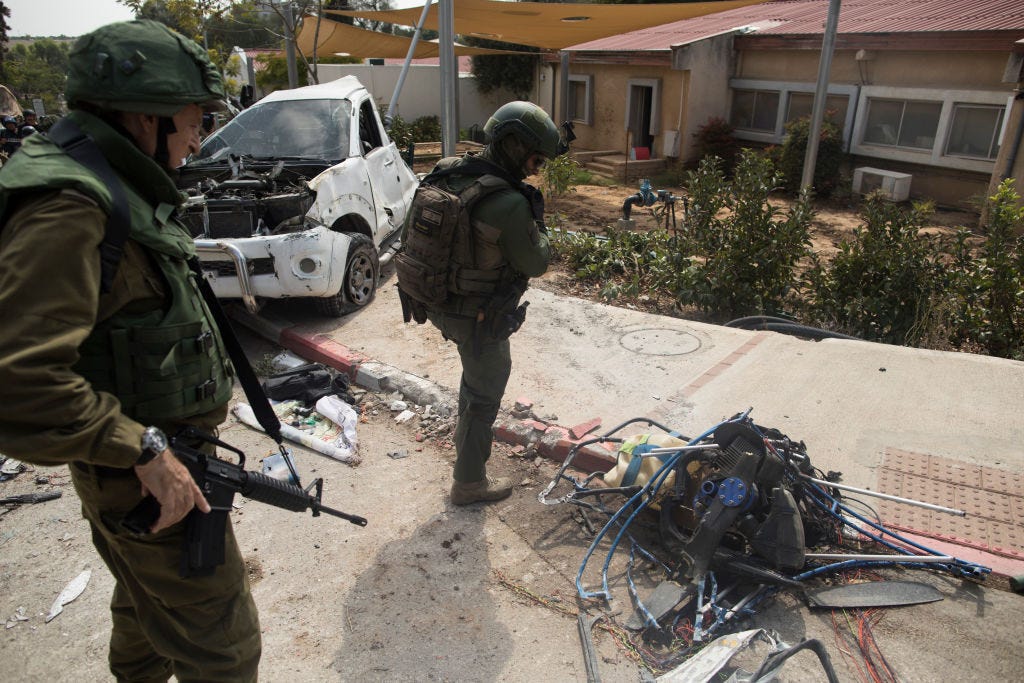
After Operation Cast Lead in 2008-2009, rocket attacks from Gaza eventually resumed. After Operation Protective Edge in 2014, Hamas rebuilt its military capabilities. And on October 7, 2023, despite years of implementing the Dahiya Doctrine, Hamas executed the deadliest attack on Israeli civilians in the country’s history.
This strategic failure stems from the doctrine’s fundamental misunderstanding of asymmetric conflict. By targeting civilian populations and infrastructure, the policy generates the very conditions, desperation, trauma, and radicalization, that fuel resistance movements. As one analyst noted, the “human animals” of Hamas that Israeli officials reference emerged from “a concentration camp… from pulverized neighborhoods with obliterated families” created by policies like those championed by Israeli military leaders.
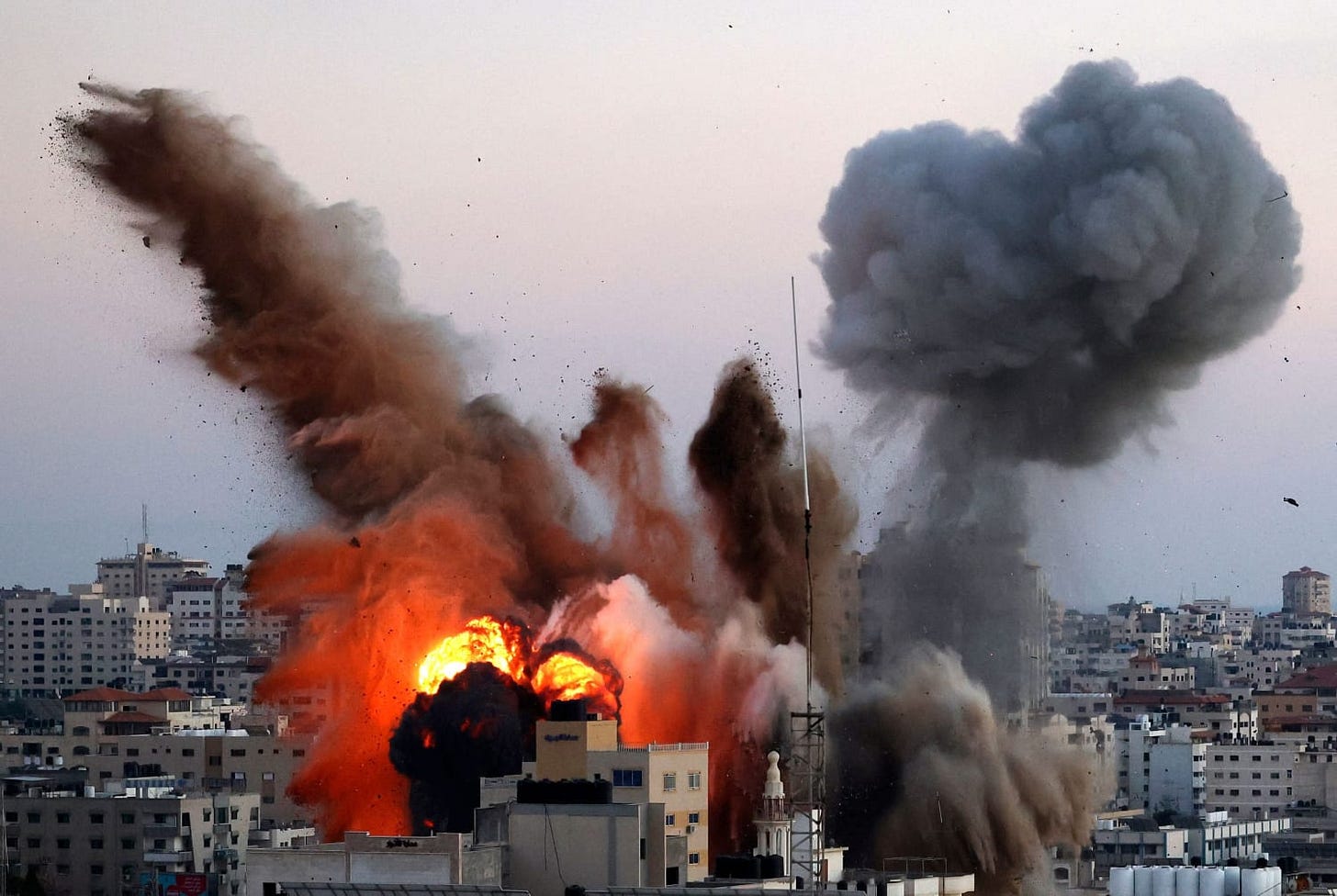
Dr. Ahron Bregman, who served in the Israeli army and now lectures at King’s College, explained that the doctrine prioritizes “causing damage rather than accuracy,” which is why at least 40 percent of bombs dropped on Gaza are “dumb bombs” without guidance systems. This approach may satisfy short-term political demands for a forceful response, but it perpetuates cycles of violence while deepening the humanitarian catastrophe.
International Complicity and Impunity
Despite multiple UN investigations finding evidence of war crimes, no Israeli official has faced prosecution at the International Criminal Court for implementing the Dahiya Doctrine. The Goldstone Report, while widely cited by human rights organizations, produced no meaningful accountability.
The United States has provided crucial material and diplomatic support throughout this period. Leaked State Department documents examined by Byline Times confirm that the logic of disproportionate violence in Gaza has evolved “under the watchful eye of the United States,” with years of US support, coaching, and international cover enabling the IDF to construct sophisticated legal justifications for the doctrine’s advocacy of disproportionate violence against Palestinian civilians.
President Joe Biden’s repeated statements that Israel has the “right to defend itself,” without qualification or acknowledgment of Palestinian rights under occupation, exemplify this enabling approach. The provision of precision-guided munitions and other military hardware directly facilitates the doctrine’s implementation.
This pattern of impunity has emboldened Israel’s actions against Gaza. When Israeli officials can openly declare their intent to create “scorched earth” where Palestinians “have no future,” and face no consequences, the international legal framework designed to prevent such atrocities reveals itself as useless without people willing to enforce it.
A Doctrine of Endless War
The Dahiya Doctrine is a philosophy of collective punishment that treats entire civilian populations as targets, explicitly rejects international humanitarian law, and perpetuates cycles of violence while claiming to pursue security through deterrence.
From its origins in the rubble of Beirut’s Dahiya neighborhood to its most extreme implementation in Gaza since October 7, 2023, the doctrine has left a trail of devastation: tens of thousands of civilians killed, hundreds of thousands of homes destroyed, and entire communities traumatized across generations. The use of AI systems to automate and accelerate this destruction shows how Israel uses technology not to minimize civilian harm but to maximize the scale and speed of its attacks on residential areas.
The doctrine’s continued use despite its obvious strategic failure reveals that its true function may be less about security than about maintaining dominance through overwhelming force. As former UN Special Rapporteur Richard Falk argued, it is “state terrorism” given the veneer of military necessity.
For as long as the international community fails to hold Israel accountable for systematically violating the most fundamental principles of humanitarian law, the Dahiya Doctrine will continue to operate, all while the world watches.
Al Jazeera. 2024. “Why Did Israel Deploy Hannibal Directive, Allowing Killing of Own Citizens.” July 9. https://www.aljazeera.com/news/2024/7/9/why-did-israel-deploy-hannibal-directive-allowing-killing-of-own-citizens
Al Jazeera. 2024. “’Dahiyeh Doctrine’ Returns to Dahiyeh.” October 3. https://www.aljazeera.com/opinions/2024/10/3/dahiyeh-doctrine-returns-to-dahiyeh
The Washington Post. 2023. “The Punishing Military Doctrine That Israel May Be Using in Gaza.” November 10. https://www.washingtonpost.com/world/2023/11/10/israel-dahiya-doctrine-disproportionate-strategy-military-gaza-idf/
Institute for Middle East Understanding. 2025. “Explainer: The Dahiya Doctrine & Israel’s Use of Disproportionate Force.” October 14. https://imeu.org/resources/resources/explainer-the-dahiya-doctrine-israels-use-of-disproportionate-force/175
Journal of Palestine Studies. 2014. “The Dahiya Doctrine, Proportionality, and War Crimes.” September 14. https://www.palestine-studies.org/en/node/186668
PBS NewsHour. 2023. “War in the Holy Land: A PBS News Special Report.” October 12. https://www.pbs.org/video/war-in-the-holy-land-a-pbs-news-special-report-8hglaj/
Le Monde. 2024. “Gaza: Israel’s Unjustifiable Scorched-Earth Policy.” March 6. https://www.lemonde.fr/en/opinion/article/2024/03/06/gaza-israel-s-unjustifiable-scorched-earth-policy_6590845_23.html
Novara Media. 2025. “The Israeli Military Strategies the BBC Doesn’t Want You to Know About.” October 6. https://novaramedia.com/2025/10/07/the-israeli-military-strategies-the-bbc-doesnt-want-you-to-know-about/
Mondoweiss. 2023. “Israel’s Gaza Onslaught Is the Next Stage of the Dahiya Doctrine.” December 1. https://mondoweiss.net/2023/12/israels-gaza-onslaught-is-the-next-stage-of-the-dahiya-doctrine/
Institute for Middle East Understanding. 2008. “Fact Sheet: Israel’s ‘Operation Cast Lead’ (2008-09).” August 31. https://imeu.org/resources/resources/fact-sheet-israels-operation-cast-lead-2008-09/411
United Nations. 2009. “UN Fact Finding Mission Finds Strong Evidence of War Crimes and Crimes Against Humanity.” September 15. https://www.ohchr.org/en/press-releases/2009/10/un-fact-finding-mission-finds-strong-evidence-war-crimes-and-crimes-against
Al Jazeera. 2023. “Israel Announces ‘Total’ Blockade on Gaza.” October 9. https://www.aljazeera.com/news/2023/10/9/israel-announces-total-blockade-on-gaza
+972 Magazine. 2024. “’A Mass Assassination Factory’: Inside Israel’s Calculated Bombing of Gaza.” April 24. https://www.972mag.com/mass-assassination-factory-israel-calculated-bombing-gaza/
Costs of War Project, Watson Institute, Brown University. 2025. “The Human Toll of the Gaza War: Direct and Indirect Death from 7 October 2023 to 3 October 2025.” October 7. https://costsofwar.watson.brown.edu/sites/default/files/2025-10/Human-Toll-in-Gaza_Costs-of-War_Crawford_7-October-2025.pdf
London School of Hygiene & Tropical Medicine. 2025. “Gaza: 64,000 Deaths Due to Violence Between October 2023 and June 2024.” January 9. https://www.lshtm.ac.uk/newsevents/news/2025/gaza-64000-deaths-due-violence-between-october-2023-and-june-2024-analysis
Al Haq. 2024. “Statements by Israeli Officials, Soldiers and Civil Society on Genocide.” January 10. https://www.alhaq.org/cached_uploads/download/2024/01/10/official-translation-of-statements-informal-translations-final-list-1704917626.pdf
Electronic Intifada. 2017. “Israel’s ‘Dahiya Doctrine’ Comes to Gaza.” February 11. https://electronicintifada.net/content/israels-dahiya-doctrine-comes-gaza/8006
Reuters. 2025. “Satellite Images Show Scale of Destruction Across Gaza.” October 7. https://www.reuters.com/pictures/satellite-images-show-scale-destruction-across-gaza-2025-10-07/
AP News. 2025. “Drone Footage of Gaza City Shows Destruction of 2-Year War.” October 11. https://apnews.com/article/gaza-israel-palestinians-drone-footage-destruction-ceasefire-4a03097279002889573791ecd0112df8
Al Jazeera. 2024. “Gaza Infrastructure Damages Estimated at $18.5bn in UN-World Bank Report.” April 2. https://www.aljazeera.com/news/2024/4/2/gaza-infrastructure-damages-estimated-at-18-5-bln-in-un-world-bank-report
ABC News. 2025. “Satellite Images Show Extent of Destruction in Gaza After 2 Years of War.” October 6. https://abcnews.go.com/International/satellite-images-show-extent-destruction-gaza-after-2/story?id=126253670
Human Rights Watch. 2024. “Extermination and Acts of Genocide: Israel Deliberately Depriving Palestinians in Gaza of Water, Food, and Fuel.” December 19. https://www.hrw.org/report/2024/12/19/extermination-and-acts-genocide/israel-deliberately-depriving-palestinians-gaza
Briarpatch Magazine. 2007. “From the Rubble: Post-War Images of Lebanon.” April 18. https://briarpatchmagazine.com/articles/view/from-the-rubble-post-war-images-of-lebanon



